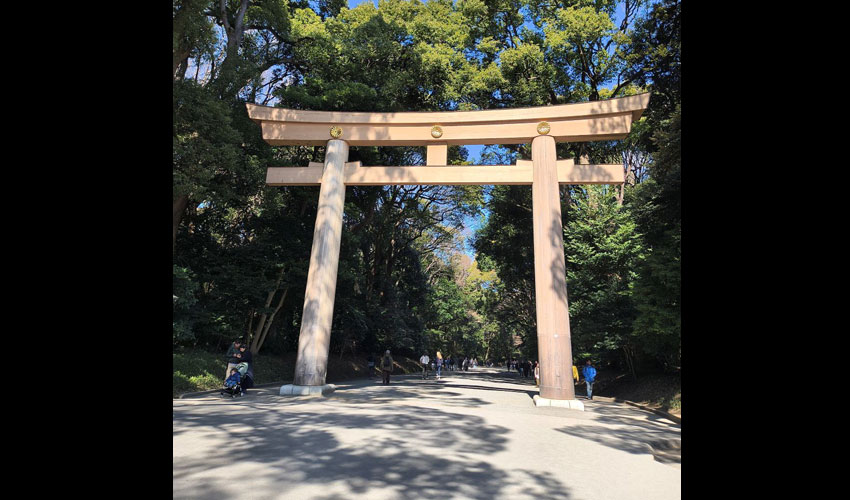
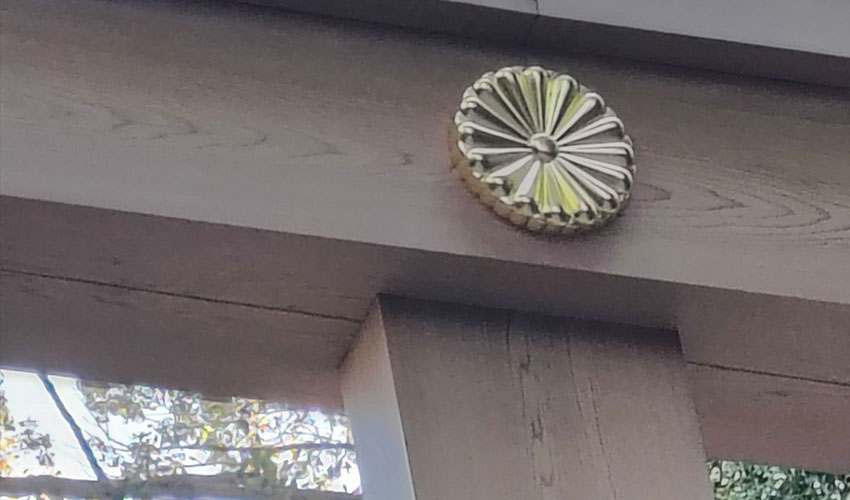
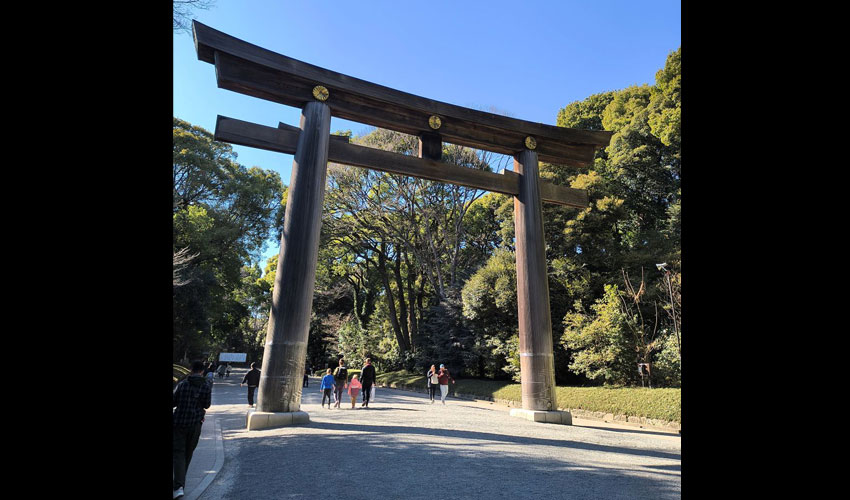
Torii
Torii is the gateway to a sacred place. The torii of Meiji Jingu is truly worthy of being described as majestic.
Approaching from the Omotesando side, visitors cross the Jingu Bridge and encounter the first torii of the South Approach. The grand torii (the second torii) is one of the largest wooden torii in Japan, standing at an impressive height of 12 meters.
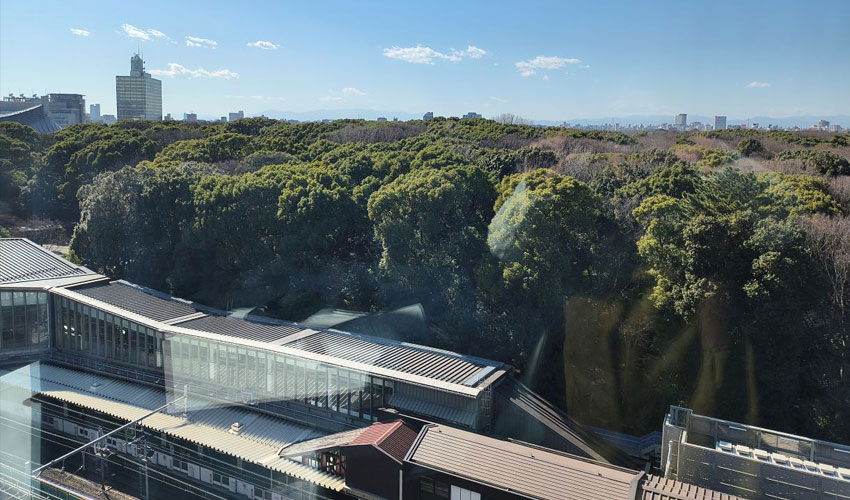
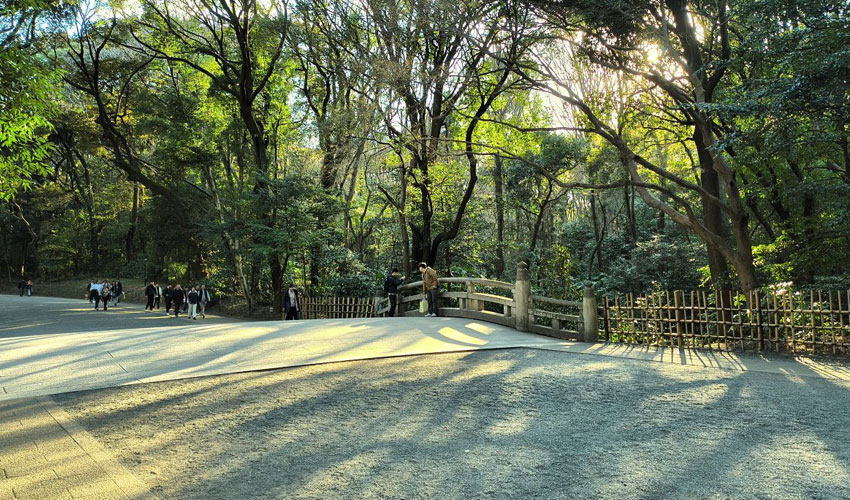
The Sacred Forest of Meiji Jingu
You can feel the breath of the trees.
Adjacent to Harajuku Station on the Yamanote Line, the vast forest of Meiji Jingu spans an area equivalent to 15 Tokyo Domes. This lush oasis in Tokyo was created by volunteers who planted trees over a century ago, and over time, it has grown into a serene sanctuary.
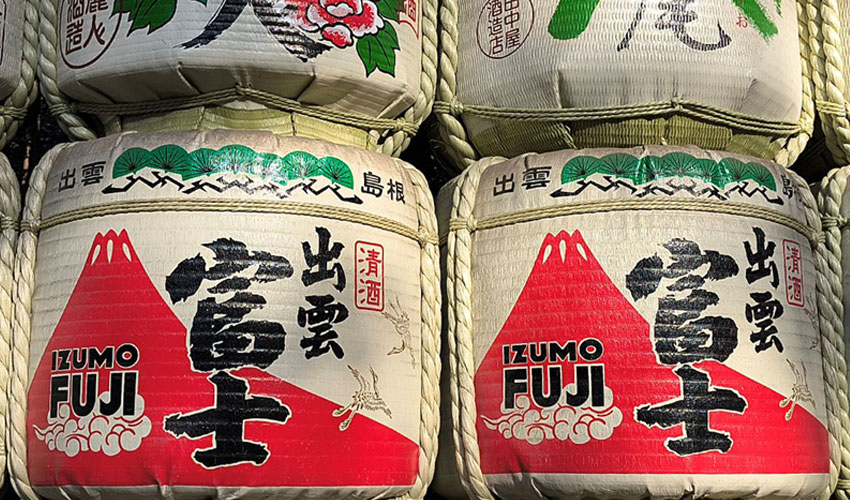
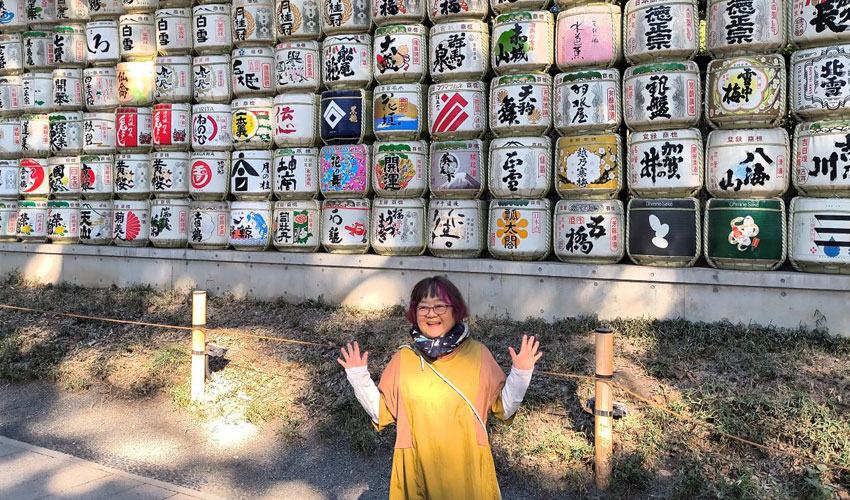
Sake Barrels
Rows of sake barrels from all over Japan are displayed here. The colorful characters and illustrations on the barrels are works of art in themselves. Many visitors stop in front of them to take commemorative photos.
Directly across from the sake barrels, you’ll also find barrels of Burgundy wine, offering an interesting contrast.
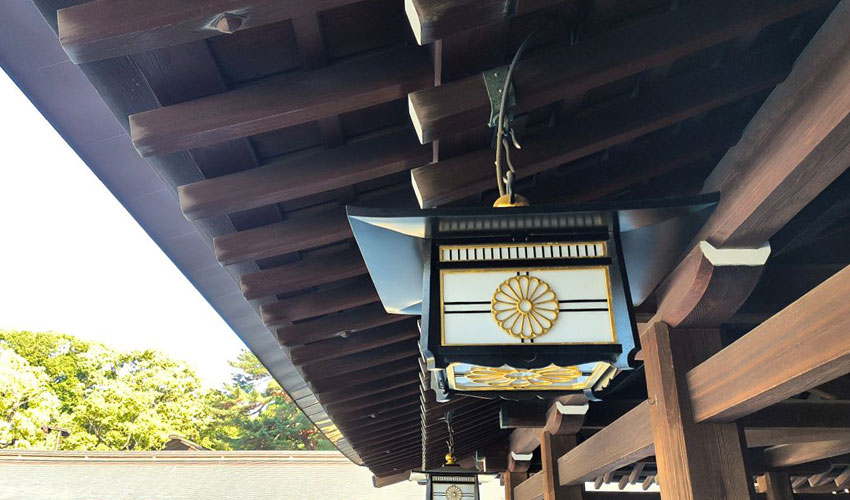
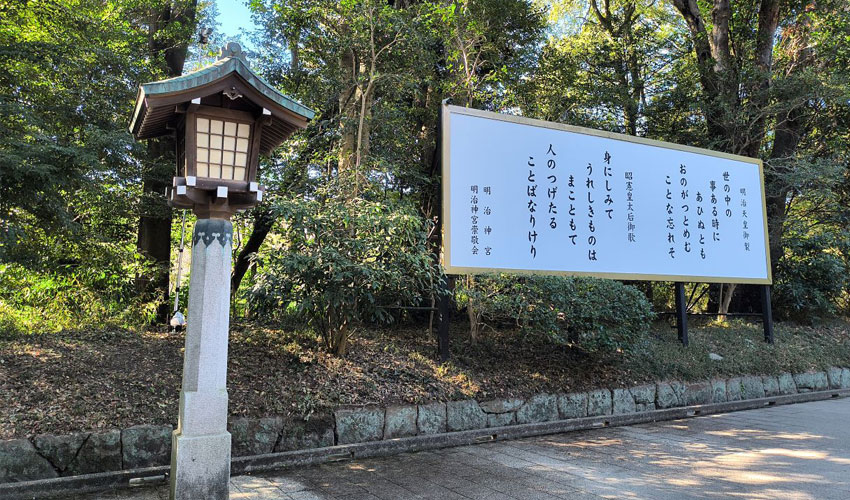
Emperor Meiji
This is the shrine dedicated to Emperor Meiji, who played a key role in Japan’s modernization.
The chrysanthemum crest is the emblem of the Imperial Family. Along the shrine’s approach, there are places where poems composed by Emperor Meiji and Empress Shoken are displayed.
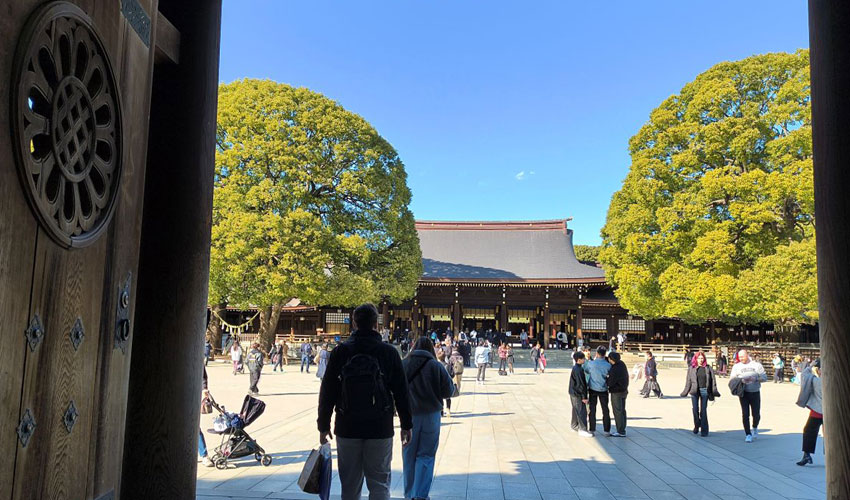
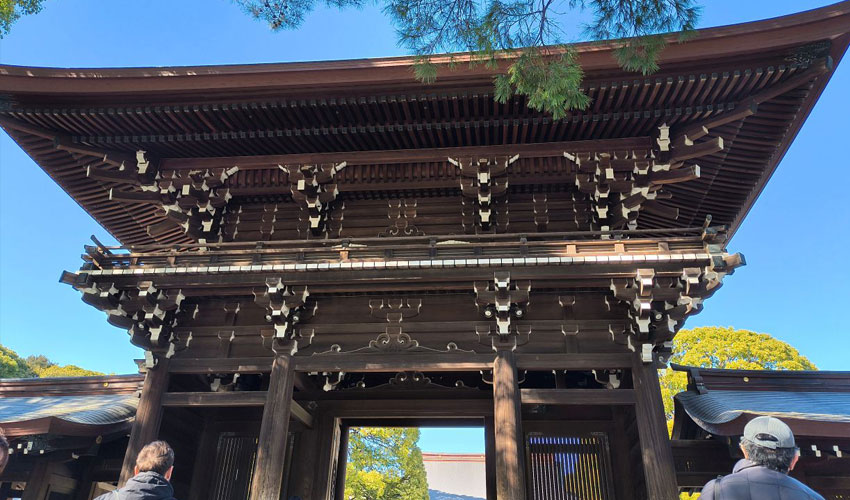
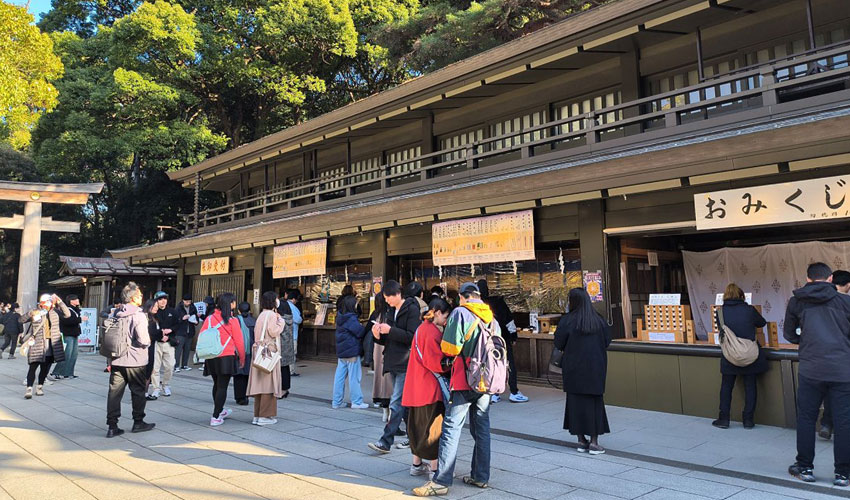
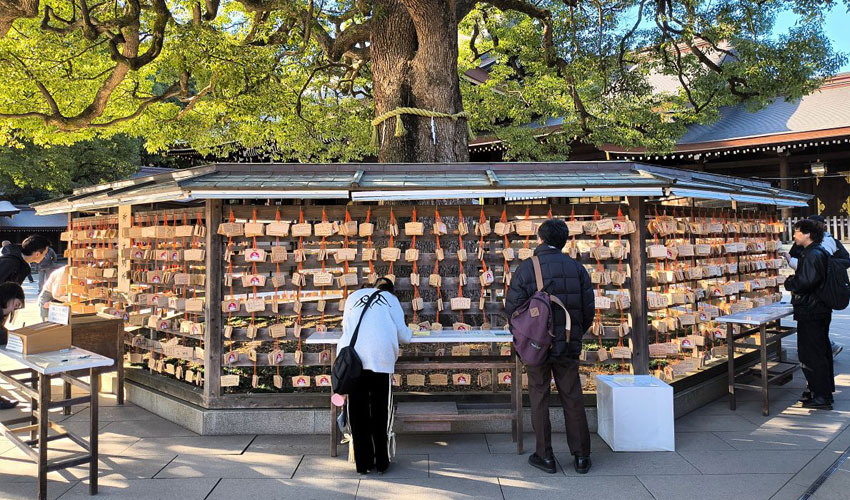
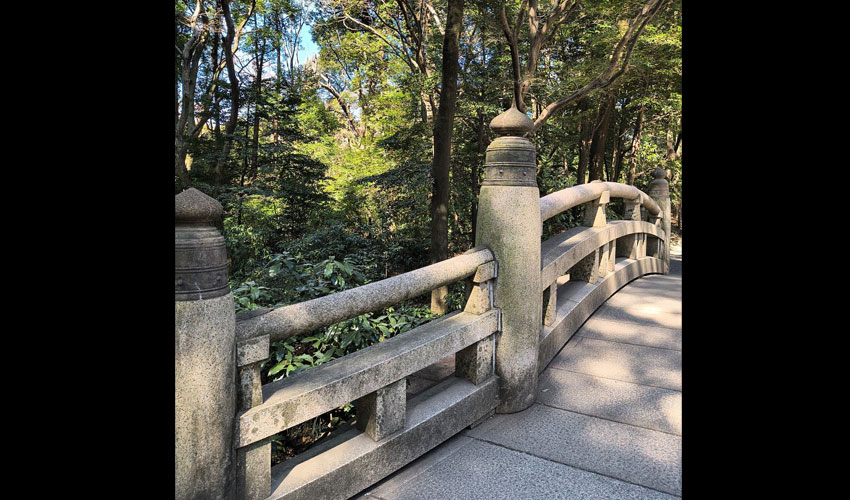

Various spots within the shrine grounds
Passing through the South Approach and entering through the Minami Shinmon (South Shrine Gate), you will reach the main hall. Within the shrine grounds, you will find the Meoto Kusu—a pair of sacred camphor trees bound together with a thick rope, symbolizing marital harmony—as well as numerous ema (wooden votive plaques) hung by worshippers. Today, many foreign visitors also leave their wishes, and ema written in various languages can be seen.
There are countless fascinating spots to appreciate, including Shinkyo Bridge, stone lanterns, and the omikuji fortune-telling stand.
The Meiji Jingu Museum showcases a collection related to the Imperial Family, and the building itself was designed by world-renowned architect Kuma Kengo.
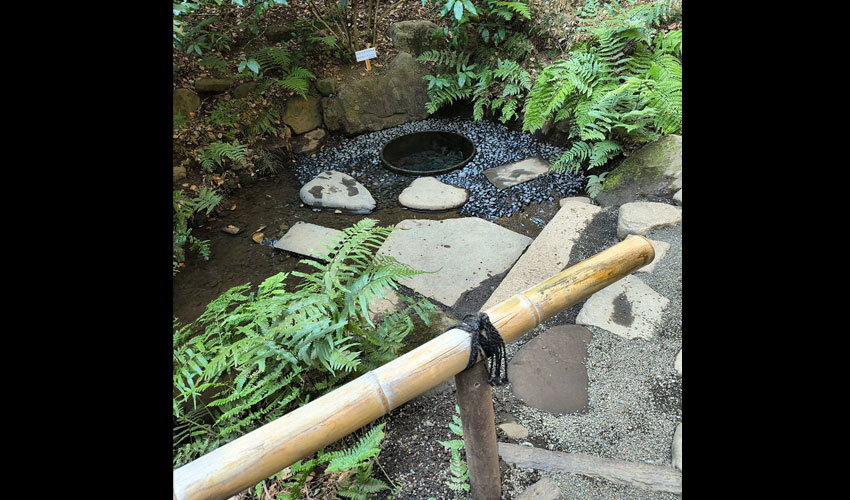

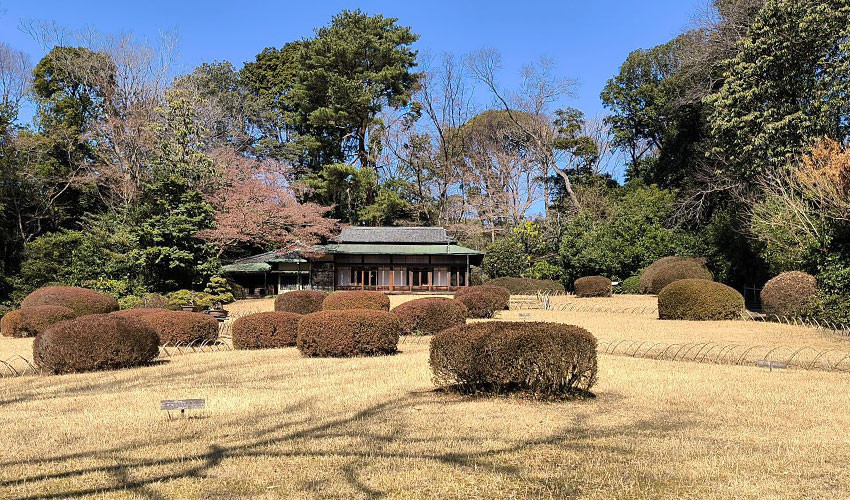
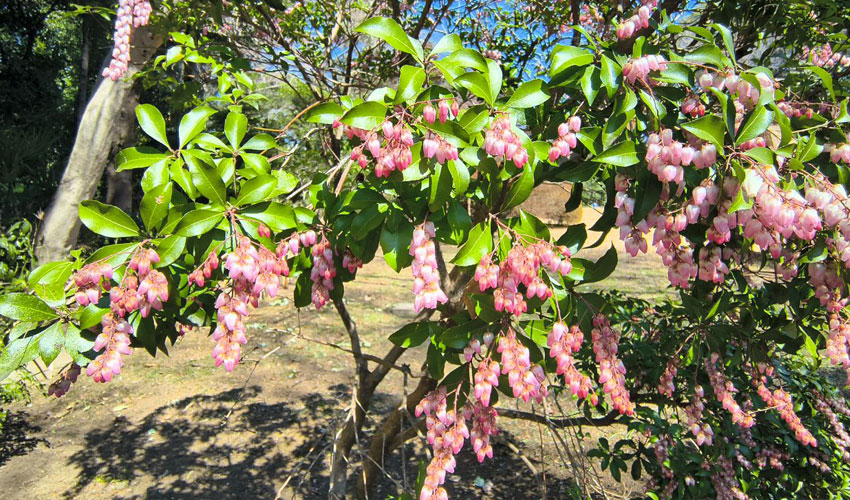
Gyoen (Inner Garden)
This serene garden was once beloved by Empress Shoken.
In May to June, the Iris Garden becomes a breathtaking sight, displaying vibrant blooms. The garden is also home to Kiyomasa’s Well, a well-known power spot believed to hold spiritual energy.
While strolling along the garden paths, Noripy came across delicate asebi (Japanese andromeda) flowers, adding a charming touch to the scenery.

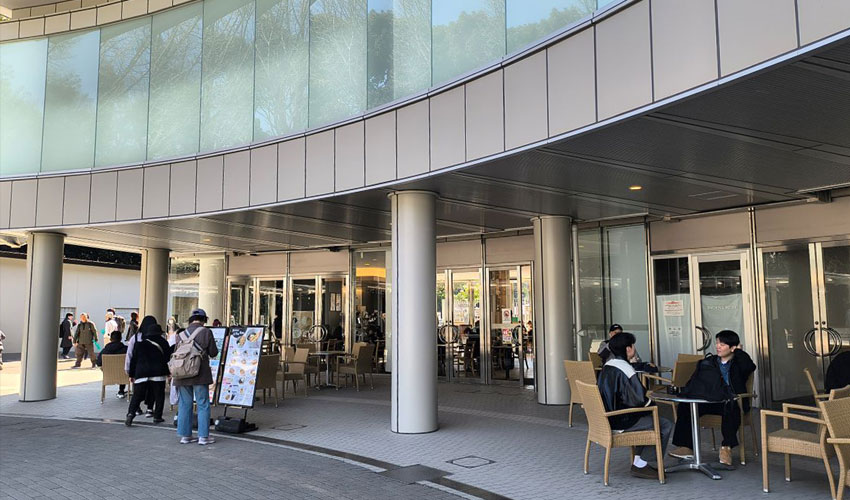
Café & Souvenir Shop
At the souvenir shop next to the café, Noripy selected a few souvenirs.
Dorayaki (sweet red bean pancakes), Bekkō-ame (traditional amber candy), a lantern-shaped magnet, a mini bottle of sake, and a logo-engraved masu (wooden sake cup).
How about these as souvenirs for your family and friends?
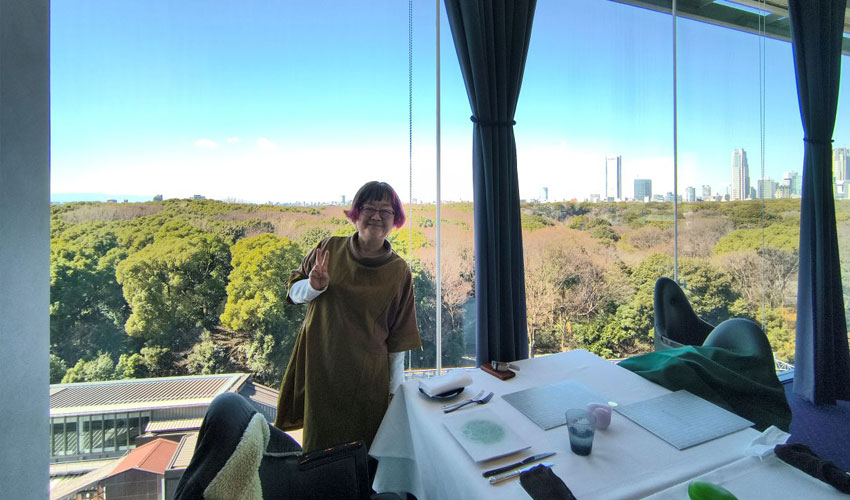
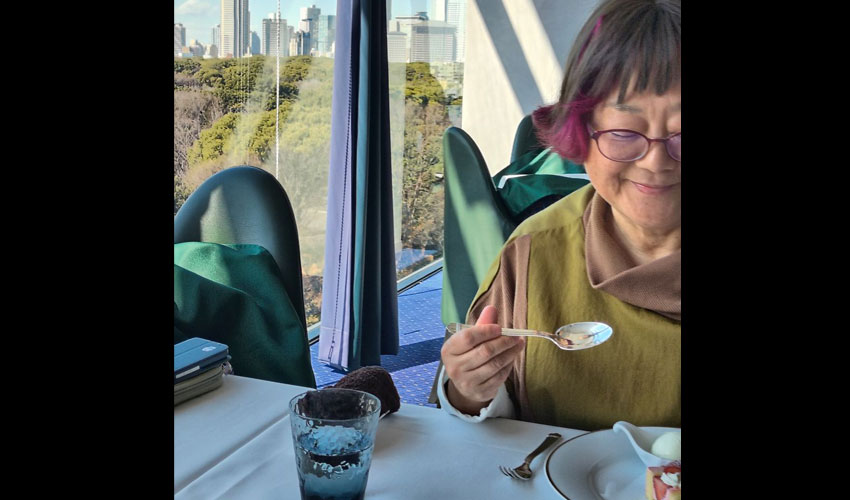
Foodie’s Delight
Located in a building near Harajuku Station, Shiseido Parlour The Harajuku offers a dining experience with a breathtaking view of the sacred forest of Meiji Jingu Shrine.
The food was, of course, exceptional, but this time, it was the magnificent forest view from the window that truly made the experience special.
Foodie, satisfied!
Comment